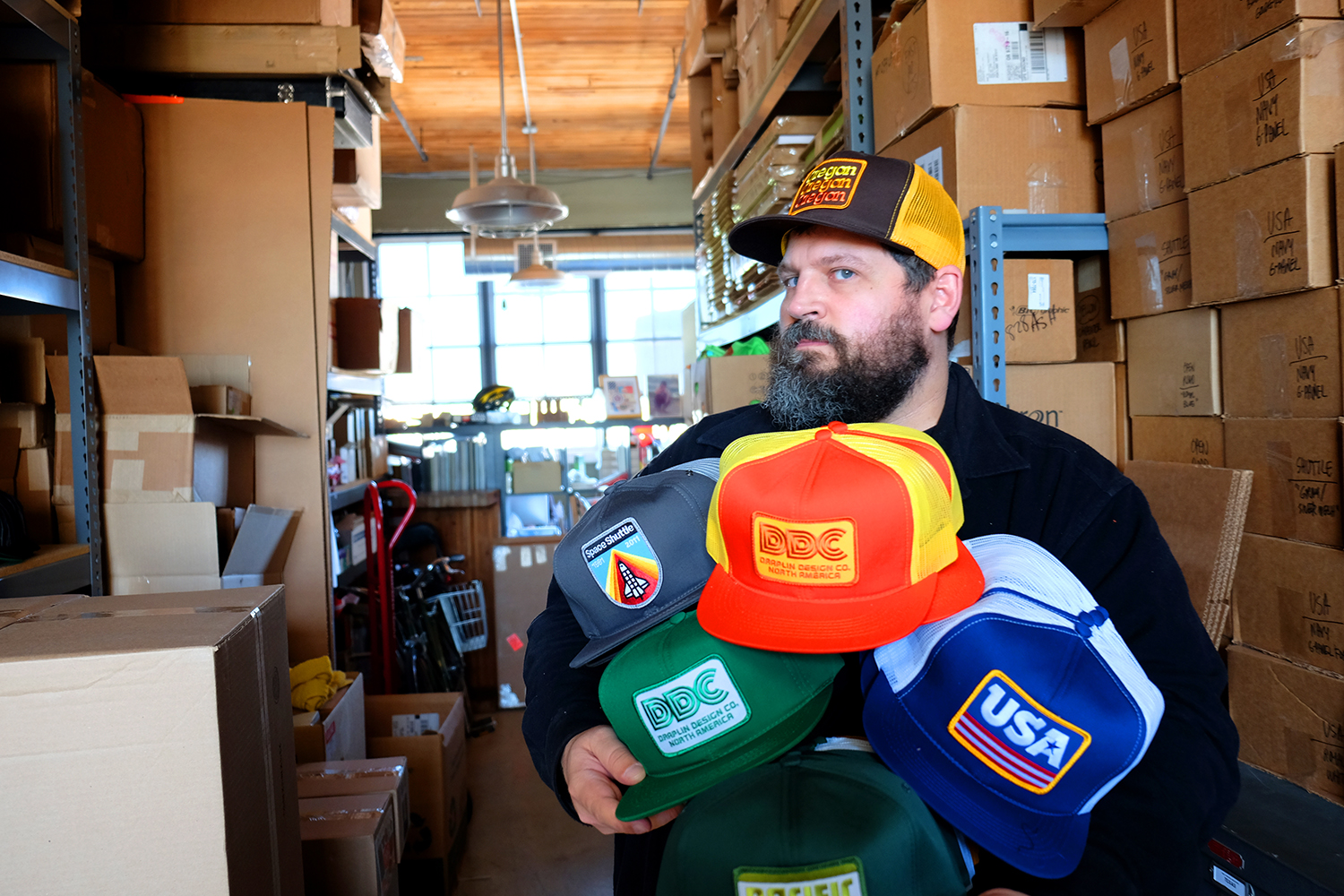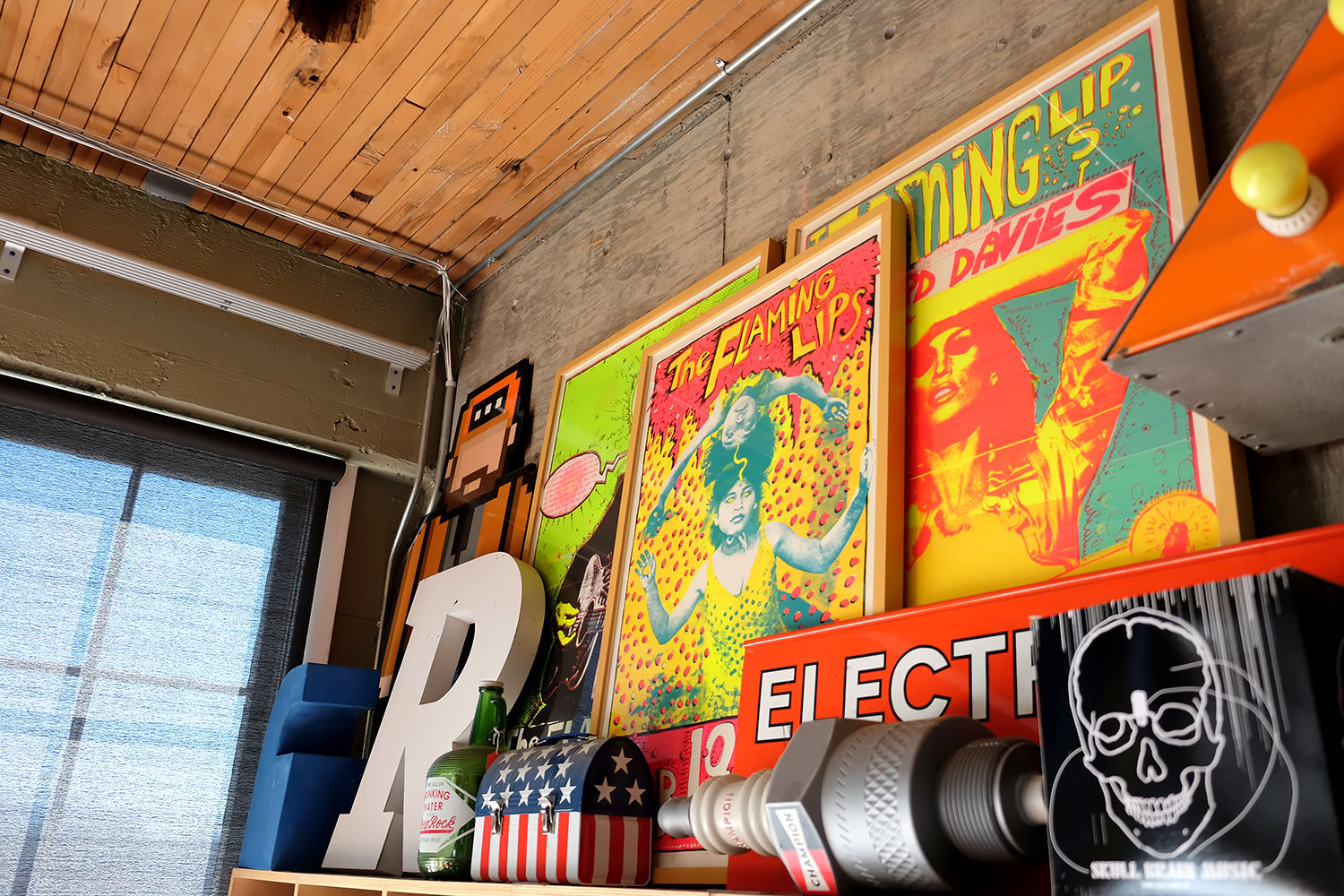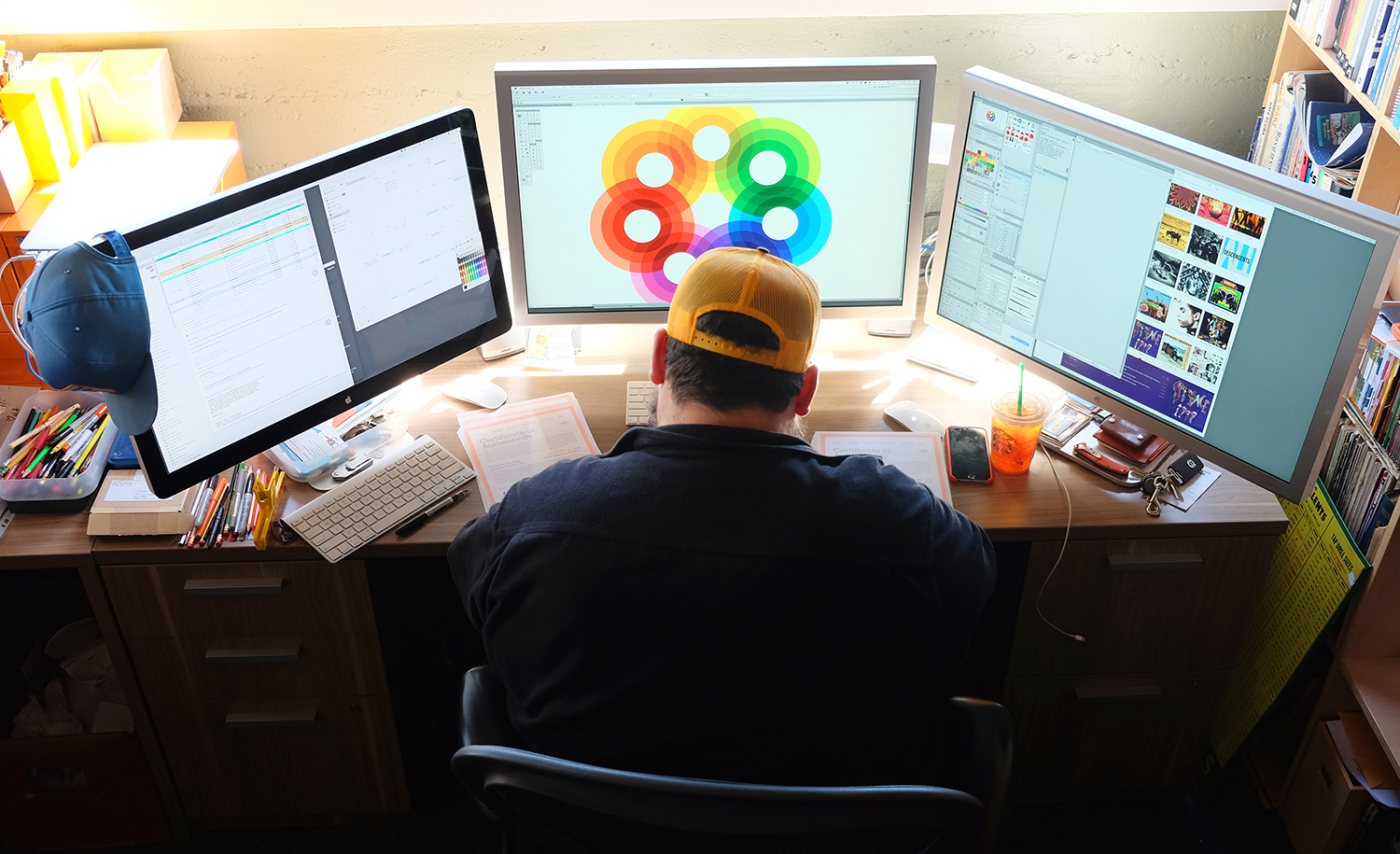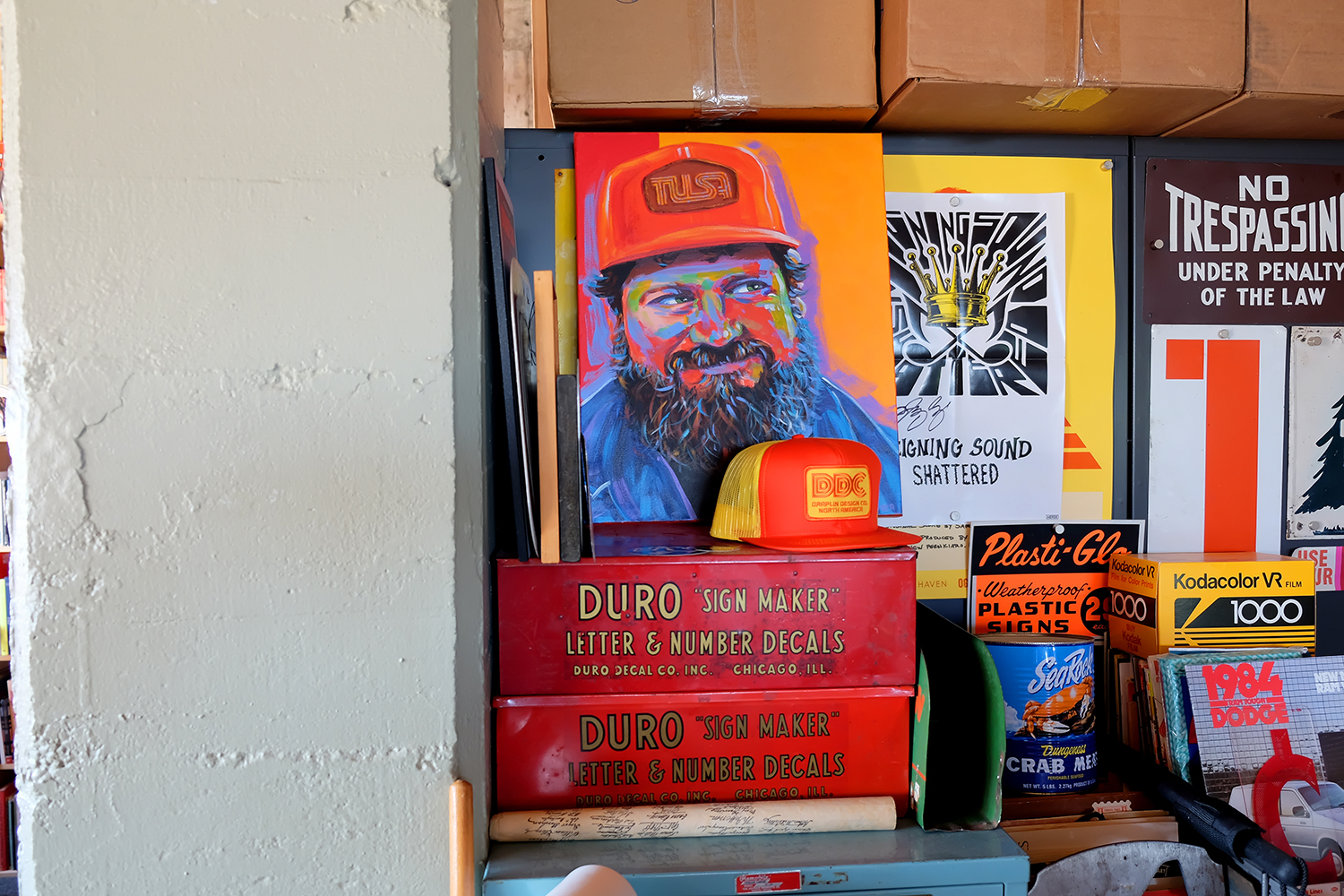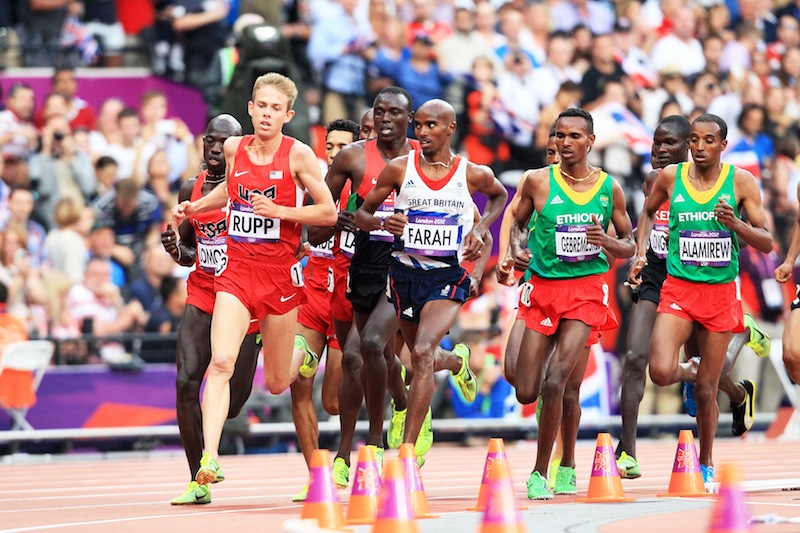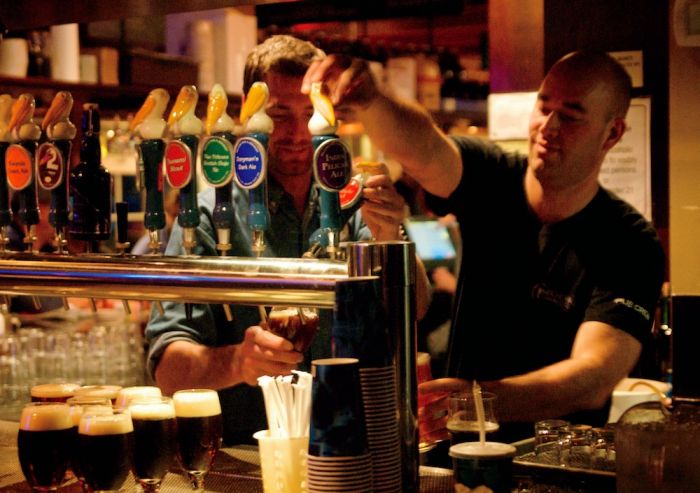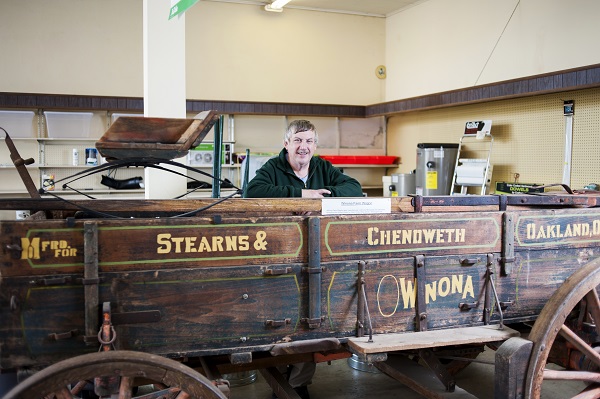written by Tricia Louvar | photography by Michael Williamson
Uncle Terry is a riot and hearts butter. The handmade sign in blue and green depicts a rendition of Aaron James Draplin’s family member. “Sure, my hand isn’t steady. And yeah, my content choices are a bit precarious. I know, I know … my finesse in this new freehand arena is scant at best. #stubbornfacts But I’m trying, and I love my Uncle Terry.” Around 1,400 hundred people, out of his nearly 85,000 Instagram followers, give Draplin’s handmade poster an instant like.
In the graphic design world, Draplin is a self-made hero elevated to legend status, a creative type in service to the underdogs (and big dogs) in the world of branding and marketing. Not many graphic designers are requested by Google to be a keynote speaker. Not many graphic designers present on the TED Talk stage. He’s a sought-after public speaker with charm, authenticity and witticisms who spreads creative love with his talk, “Tall Tales From a Large Man.” (He has presented it almost 300 times.) Draplin, Mr. Self-Depreciation, lovingly refers to them as “speaking fiascos.”
He’s accessible. He’s genuine. He drives the speed limit. He’s 42 and “Midwesting” in the Pacific Northwest. He’s the brains behind Field Notes, pocket-size analog notebooks sold around the country at retailers and in his pop-up stores. He’s all about Portland’s gloom, rain and sweater weather. Hoodies. Comfort food. Casserole. He’s not down to the usual Portlandia culture of craft brews, coffee, bourbon, sushi or miso “dishwater looking” soup.
Midwesting in the Pacific Northwest
Even though Draplin has lived longer in the West now than in the Midwest, his working man roots linger and inform his graphic design work, business style and aesthetics. “I come from an unpretty place—Traverse City, Michigan—but it was industrial and functional at the same time,” Draplin said.
He originally came out to Oregon to be a “rat kid on a snowboard.” After working odd jobs around the West, he leapt into his adulthood and went back to the Midwest to attend art school in Minneapolis. Then he took an art director job in Southern California at Snowboarder Magazine. He won “Art Director of the Year” for Primedia in 2000; he beat out other magazines such as Teen, Cat Fancy and Gun Dog. Soon thereafter, Cinco Design Office in Portland offered him a senior designer position, which he accepted. He landed in Portland in 2002. Two years later, he stepped into the lonely world of small business, started his own company, Draplin Design Co. (DDC), and has been debt free for the last five years, all by the grace of hustle and working pants-free in his workshop. (Note: he dislikes wearing pants while working).
“Southern California was too everything—too sunny, too pretty, too expensive, too Jones-y. It constantly reminds you of what you’ll never have,” he said. Conversely, Portland made him feel like he was a man who could have everything. He paid off his house from his “little mouse finger” doing little design projects that led to medium-sized projects, which then lead to bigger clients and general logo creation world domination. In his version of Portland, he has less stuff but observed that “there are no Joneses in Portland.” He lives off his design work, gives clients concepts and helps launch brands while staying within a client’s limitations and budget.
His Midwestern work ethic imbues his design aesthetic. If a line is the voice to an artist, then Draplin likes his lines “thick and meaty, like me.” The Michigan kid still hustles and carves out work time seven days a week. “When I got myself free and away from someone else it was very liberating and allowed me to invent my own life. When you cover your own rent by your own hands, it’s actualization. You’re armed in a different way. In the Midwest, there is this idea that you take a crappy job, you accept the crappy job as your life and carry on. You take it to the chin. Suck it up. You work long hours and learn to accept this is your life,” Draplin said. “In the West, I didn’t see any of this. Nobody worked overtime. They had hobbies, activities; they had work-life balance. It blew my mind. It wasn’t in my vocabulary.”
Solving little puzzles
The wheels of American progress made him realize he could control his creative career on his own by doing what he loves: tinkering with logos and typography. “My hand on paper is way more free than on a computer,” he said.
At wayward gas stations or yard sales, on the way to a Melvins concert or in his parents’ basement, Draplin covets relics of typography’s past. He finds inspiration from simple designs and sans serif type (though he’s not totally opposed to serif type) from days past, dusts them off with his hand and then creates hundreds of logos with vector tools. If he isn’t creating for someone else—a bigwig client, a kid entrepreneur needing a little handout to launch his business or his sister’s yard-sale signs—he’s designing for himself, because as a creative person, this is just how Draplin operates.
He thinks of graphic design and owning a business as solving little puzzles. The world of typography infiltrates a country’s semiotics. “I started out here in Portland as a gentle wobbly professional, but it didn’t take a lot to make a little life,” Draplin said. “I figured out my budget many years ago. I got the insurance. My home’s figured out. What about the rest of the week? What am I fighting for? I listed things. You need a business license? No one ever told me. I worked in the shadows, but now I’m official. My money goes toward people who need help. It’s about standing back and being a good citizen.”


